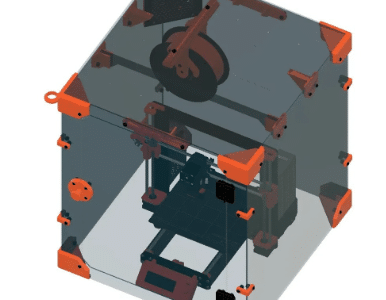
Introduction:
Software development teams are now able to increase productivity, decrease manual errors, and produce high-quality products thanks to automation testing. Of all the automation tools out there, Selenium is one of the most widely used. There are, nevertheless, a number of additional automation tools available, each with special characteristics and functionalities. We’ll examine Selenium’s advantages and disadvantages in relation to other top automation tools in this comparison analysis so you can choose the best option for your testing requirements.
Selenium
An open-source platform for automated testing of web applications is called Selenium. It supports Java, Python, and C# among other computer languages, and offers a set of tools for automating web browsers on different platforms. The fundamental component of Selenium, Selenium WebDriver, enables users to work with web elements, click buttons and fill out forms, and run test scripts in a variety of browsers.
Advantages of Selenium
Open-source: Because Selenium is free and open-source, developers and businesses of all sizes can use it without having to pay for a license.
Cross-browser compatibility: Chrome, Firefox, Safari, Edge, and other popular web browsers are supported by Selenium WebDriver, enabling thorough testing in a variety of settings.
Language support: Teams can work with their favorite language and easily integrate Selenium into current development workflows thanks to its support for a number of programming languages.
Huge user and contributor base and resources: Selenium has a large user and contributor base that benefits from comprehensive documentation, tutorials, and help forums, which make it simpler for beginners to get started and address problems.
Extension and flexibility: Selenium’s capabilities can be expanded to meet a variety of testing needs by integrating it with other testing frameworks and tools like TestNG and JUnit.
The drawbacks of selenium
Absence of built-in reporting: Users must rely on third-party libraries or plugins to generate thorough test reports because Selenium lacks these features.
Managing dynamic elements: Test script flakiness and maintenance overhead may result from Selenium’s inability to handle dynamically changing items on web pages.
Configuration and setup: For novices in particular, setting up Selenium WebDriver and installing browser drivers can be difficult, involving extra dependencies and setup procedures.
Limited assistance with testing on mobile devices: In comparison to specialized mobile testing tools, Selenium’s native support for mobile automation is limited, even though it is supported by frameworks like Appium.
Overhead for maintenance:
Over time, test scripts created using Selenium may need more regular updates and maintenance to stay up to date with changes in the application being tested.
Additional Automation Instruments:
In addition to Selenium, a number of different automation technologies provide distinct benefits and capabilities while meeting particular testing requirements.
Appium
An open-source automation tool called Appium is used to
test mobile applications on several operating systems, including iOS and
Android. For testing native, hybrid, and mobile web apps, it offers a consistent API and support for numerous programming languages.
Advantages:
Support for mobile testing across platforms.
compatibility with widely used frameworks for mobile automation.
Drawbacks:
Complexity of setup and configuration.
Restricted assistance in testing desktop web applications.
TestFinished:
SmartBear’s commercial automation tool TestComplete provides a complete solution for testing desktop, online, and mobile applications. It has built-in reporting tools, scriptless testing, and record-and-playback functionality.
Advantages:
a user-friendly GUI for writing and organizing test scripts.
integrated tools for analysis and reporting.
Drawbacks:
The price of a commercial license.
Restricted community resources and open-source integration help.
Katalon Productions:
For online, API, and mobile testing, Katalon Studio is a free automation solution that combines the strength of Selenium and Appium with an intuitive user interface. It has built-in test case management, data-driven testing, and object repositories among its features.
Advantages:
User-friendly interface with a little learning curve.
Integration with well-known CI/CD systems, such as Azure DevOps and Jenkins.
Drawbacks:
fewer sophisticated features than those found in commercial products.
reliance on external plugins for specific features.
Comparative Evaluation:
A number of aspects need to be taken into account
when comparing Selenium with other automation solutions,
including cost, compatibility, support, ease of use, and capabilities. Although Selenium has many advantages over other tools, such as TestComplete or Katalon Studio, such as being cross-browser compatible, open-source, and having a big community support, setting it up and keeping it maintained may take more work. However, for a larger cost, commercial products such as TestComplete provide a more integrated solution with integrated reporting and support.
Even though Selenium is still a popular option for web application testing, it’s critical to recognize that testing teams have different demands and that the automation tool market is always changing. When assessing automation tools, bear the following points in mind as well:
Scalability
Take into account the automation tool’s scalability to meet the expanding requirements of your project or company. Because they are open-source, tools
like Selenium may be
horizontally scaled by distributing tests
among several computers or in the cloud. Commercial solutions frequently come with licensing restrictions based on usage or user count, but they also frequently offer scalability options right out of the box.
Capabilities for Integration:
Examine the automation tool’s compatibility with other technologies and tools in your testing and development environment. The testing process can be made
more efficient overall by integrating seamlessly with bug-tracking tools,
collaborative platforms, and Continuous Integration (CI), and Continuous
Deployment (CD) pipelines. While some commercial products may offer built-in interfaces with popular development and testing tools, Selenium’s extensibility enables integration with a wide range of third-party tools and frameworks.
Assistance and Upkeep:
Determine how much upkeep and support the selected automation tool will need. For troubleshooting and updates, open-source programs like Automation test with selenium mainly rely on community help, forums, and documentation. Commercial tools frequently include training materials, exclusive support channels, and frequent upgrades that fix bugs and add new capabilities.
In summary:
In conclusion, your testing project’s unique needs, preferences, and limitations will determine whether you choose to use Selenium automation testing or another Automation testing with Selenium solution. Selenium’s cross-browser compatibility, community support, and versatility make it a popular choice for web application testing even today.



